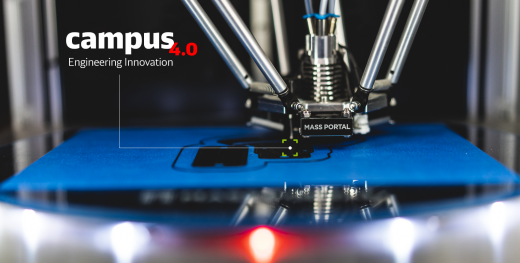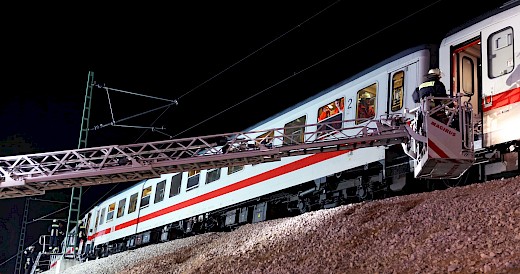digital-bauen.training
en
Better planning, more transparency
Everything for everybody at a glance:
Building Information Modeling (BIM)
Successful construction projects call for resilient, comprehensive planning. The DB Group carries out an average of more than 800 construction projects annually – an enormous planning effort. And a great opportunity for making good use of synergies by means of "virtual construction" for everybody concerned. The solution: Building Information Modeling (BIM).
entlastung-fur-betroffene
en
bim-social-share
en
trenner-bild
en
What does BIM really stand for?
BIM means end-to-end digitization of all relevant building information items from planning through realization. The data are depicted as a virtual building model – including all quantities, requirements lists and development steps along the timeline. BIM thus creates a harmonized data basis accessible for everybody involved in the construction process – from planning via purchasing to realization and even beyond, during operation of the constructed facilities.
BIM is also referred to as "5D modeling": the visually compelling depiction as a 3D model is complemented by the two additional dimensions of "time" and "costs".
Important benefits for all stakeholders
Top direct benefits include transparency and interconnectivity: timelines, costs and risks can be defined more easily, earlier and more precisely, and they can be seamlessly controlled.
Reliability and transparency in terms of costs and deadlines as well as efficiency will increase – and everybody will benefit from it.
The future belongs to BIM
The future belongs to BIM
The German Federal Ministry of Transport and Digital Infrastructure (BMVI) presented a plan by stages in late 2015 for introducing BIM. In particular – and hence with top relevance for the DB Group – with regard to infrastructural construction and infrastructure-related building construction.
DB Group and BIM
The DB Group is right at the forefront of implementing BIM: the commitment for rolling out BIM across the entire group by 2020 is in effect. This calls for comprehensive qualification – which DB Training has already started.
unser-ausbildungskonzept-ist-modular-aufgebaut-graphischer-teaser
en
DB Group and BIM
Digital building
td-video-simulatoren-1
en
Changes made easy
Construction: first virtually, then for real
Traditional construction planning starts with a CAD design. The drafts are then submitted to the authorities.
Traditional planning takes a lot of effort
In order to compile a cost calculation, the plans serve as the basis for determining the quantities needed. In case of changes in the plan – rule rather than exception – the quantity list has to be adapted. Everybody concerned will then receive the updated plans and quantities, which they in turn have to check internally and channel into their own documentation. All this causes a tremendous amount of coordination and workload. BIM reduces this amount substantially.
BIM: structured processes, clear answers
With BIM, a planning specialist will carry out changes at the project model. These changes are directly accessible right away for all concerned, both as a drawing and as data. Quantities serving as basis for cost calculation are automatically adjusted: the interlinking immediately shows the effect on the costs.
Automatically include changes
Purchasing will benefit, too: the adjusted quantity requirements clearly state the ramifications on the construction project. Do we need more steel or less? More gravel or less? Will quality change? Will the time of delivery shift? BIM provides clear-cut answers for these and further questions.
entlastung-fur-betroffene-2-2
en
With BIM, all planning data are available for everybody concerned – internally and externally. That means: data quality remains intact during each phase of the project. All have access at any time to one and the same data source. This releases synergies.
entlastung-fur-betroffene-3-3
en
trenner-bild-2
en
Benefits for project progress
Saving time thanks to precise planning
BIM with its powerful 5D modeling (i.e. its power to visualise projects including quantities and cost over time) represents a real planning revolution. In order to harness the power of this development, the pre-planning phase needs to get even more thorough. This may prolong the planning phase. But over the course of an entire project, BIM brings about significant time savings – and has already led to cost savings of up to 30% in numerous engineering projects.
entlastung-fur-betroffene-2
en
Solving problems before they occur
Now, planning discrepancies become obvious already while still at the computer, thanks to so-called "clash detection". Instead of noticing an issue as late as on the construction site and then having to act under deadline pressure and at high expense, with BIM the plan can be adjusted at an early stage so as to avoid any real problems from occurring in the first place. Construction on-site thus runs much more smoothly.
Faster permissions possible
With regard to planning approvals and permits, BIM also brings about numerous benefits. Right now it may well take years before larger construction projects take all the hurdles. With BIM, not only the outcome, but also all preceding construction phases can be visualised as model images. All stakeholders thus get a clear picture of how the site will look like and what progress will be made when.
vorteile-des-digitalen-lernens-1
en
Even preservationists, concerned residents and special interest groups can be informed and may even be convinced faster and more effectively thanks to BIM.
entlastung-fur-betroffene-3
en
trenner-bild-2-1-1
en
BIM qualification is already underway
DB Training performance
BIM qualification has already started. When you regard BIM as "5D modeling", then the two dimensions "time" and "cost" are represented by the project control system iTWO. DB Training already qualified all 6,000 employees concerned in handling the new iTWO.
moderne-lernkonzepte-basic-content
en
Comprehensive need for qualification
A first bout of qualifications on the entire BIM functionality has already taken place as well: 69 project leaders with DB Station & Service have already passed the BIM qualification. These qualifications will be continued in 2017, starting with another 300 project leaders. There is extensive demand: in 2017, already nine big DB Netz pilot projects will be carried out with BIM, and more than 100 smaller projects at DB Station & Service. By 2020, all 6,000 persons concerned are to have successfully passed BIM qualification.
Enquiry at the divisions
Currently (November 2016), an enquiry at the divisions is underway. The goal is to organise the qualification demand across divisions in order to carry out the trainings as efficiently and cost-effectively as possible. In addition, DB Training will prepare specific qualification measures for individual target groups within the DB Group.
Opportunity for external partners
But not only there: BIM will only be able to deploy its full potential once external partners – planners, suppliers, construction companies – also work with BIM. That's why DB Training will also qualify such partners upon demand. One thing is clear already: for everyone doing construction projects with and for the DB Group, this will be absolutely key.
moderne-lernkonzepte-basic-content-2
en
DB Group's construction partners are hence invited to discuss their qualification needs with DB Training – so that individual needs can be answered.
entlastung-fur-betroffene-3-2
en
trenner-bild-2-1-1-1
en
Modern learning for modern constructing
Already here today: "Blended Learning"
DB Training carried out the first wave of BIM qualifications as a one-day, in-class workshop upon clients' request. In the future, however, a proprietary Blended Learning concept will be conceived and conducted, offering more varied and more sustainable learning.
Project leaders, technical QA officers, commissioning officers and work domain heads for the regional construction areas constitute particular focus groups. They are stationed all across Germany – another good reason for decreasing the amount of in-class workshops and increasing the amount of self-conducted learning at one's own workplace instead.
What the Blended Learning concept consists of
The learning process starts with a kick-off seminar providing joint preparation for the subsequent two self-conducted learning phases where participants build and increase their knowledge about BIM. By means of exercises, transfer assignments and intensive exchange of experiences in an activity- and practice-oriented workshop, the participants acquire the necessary confidence for action. During the entire learning process, the learners are supported by a learning and training facilitator.
entlastung-fur-betroffene-2-2-1
en
- Pre-phase, invitation and first questions directed to the learners, supported by the learning and training facilitator
- Introduction / kick-off webinar
- First web-based self-learning phase
- Webinar
- Second web-based self-learning phase
- Practice workshop and conclusion
- During the entire period, regular controls of learning progress and results make sure the goal is achieved
Getting to know BIM methodology
During the entire training time, the learners can use the online learning management system for exchange among themselves, to discuss topics in the forum, and to contact the learning and training facilitator for support.
The goal: The participants are to get to know the entire BIM methodology and be able to use it in their daily work with full confidence.
Building Information Modeling (BIM) not only has a different name than construction used to have. It also means learning differently. So please contact DB Training!
vorteile-des-digitalen-lernens-1-2
en
Contact
How can we help you?
Just contact us. We'll be happy to provide our support.
entlastung-fur-betroffene-1
en
kontakt
en
Also interesting
Read more
Digital training concepts
Lifelong learning and continuing education are a must for everyone today. Modern, digital training concepts convey knowledge sustainably with the help of a broad range of media, from educational films through learning platforms to Blended Learning.
Campus 4.0
Innovation is engineered here: Campus 4.0 @ DB Training, Learning & Consulting offers you an all-inclusive consulting and training package.
Unfallbetreuung
DB Training unterstützt das Notfallmanagement der Deutschen Bahn bei der Bewältigung psychologischer Folgen bei Betroffenen nach Unfällen. Fachkundig und mit Fingerspitzengefühl werden Betroffene unterstützt und Behörden im Auftrag des DB Konzerns beraten.
The learning worlds of the DB.
Exciting topics, outstanding projects, and new perspectives for a shared learning culture in the DB group and the railway sector.
Wege zum neuen Job.
So schaffen Sie den Wiedereinstieg: Mit den geförderten Qualifizierungsangeboten von DB Training zurück in den Job. 20 verschiedene Qualifizierungen für jedes Alter. AZAV-zertifiziert und kostenfrei mit dem Bildungsgutschein der Bundesagentur, Jobcenter und Rentenversicherung.
referer-1
en
 Back to top
Back to top









